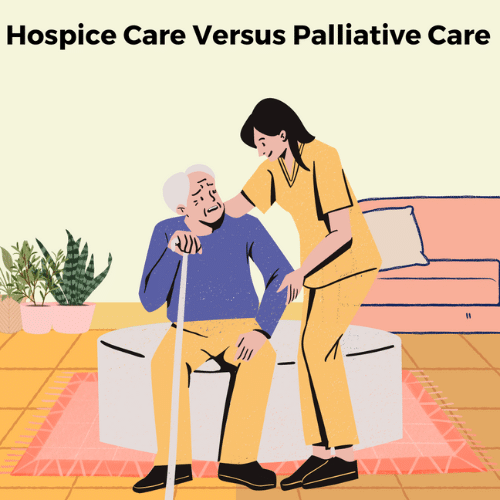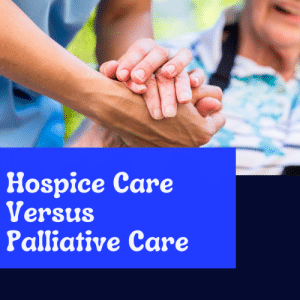
When facing serious illness or the end of life, the focus shifts from curing the condition to enhancing the patient's quality of life and providing comfort. Two essential approaches in this realm are hospice care and palliative care. Although they share the overarching goal of improving patients' well-being, these two concepts differ in their scope, timing, and settings. We will explore the differences and similarities between hospice care and palliative care, shedding light on their essential roles in providing compassionate and comprehensive medical care.
Hospice care is a specialized form of medical care primarily focused on patients with terminal illnesses who have a life expectancy of six months or less. The primary goal of hospice care is to provide comfort and support rather than curative treatment. Hospice care is often provided in the patient's home, hospice centers, or long-term care facilities. It involves a multidisciplinary team comprising doctors, nurses, social workers, counselors, and volunteers. They work together to manage pain, alleviate symptoms, and offer emotional and spiritual support to both the patient and their family.
Palliative care, on the other hand, is a broader approach to care that is not limited by life expectancy. It is intended to improve the quality of life for patients facing serious illnesses, whether they are expected to recover or not. Palliative care can begin at any stage of illness and can be provided alongside curative treatments. The focus is on managing pain, addressing symptoms, and addressing the emotional, psychological, and spiritual needs of patients. Palliative care can be administered in various settings, including hospitals, outpatient clinics, and even at home.
Hospice care is typically initiated when a patient has a prognosis of six months or less to live. It is specifically tailored for end-of-life care.
Palliative care has no strict limitations on life expectancy and can be implemented at any point during a serious illness, whether the patient is expected to recover or not.
Hospice care prioritizes comfort and quality of life over curative treatments. Medical interventions are aimed at relieving pain and discomfort.
Palliative care can be provided alongside curative treatments, focusing on symptom management and overall well-being.
Hospice care offers a comprehensive end-of-life care package that includes medical, emotional, and spiritual support for the patient and their family.
Palliative care addresses the physical, emotional, and psychological needs of patients with serious illnesses, aiming to improve their overall quality of life.

Both hospice and palliative care adopt a holistic approach to patient care, recognizing the importance of addressing physical, emotional, psychological, and spiritual needs.
Both forms of care involve a team of healthcare professionals, including doctors, nurses, social workers, counselors, and therapists, working collaboratively to provide comprehensive support.
Both approaches prioritize the patient's preferences and values, aiming to create a care plan that aligns with the patient's goals and wishes.
Hospice care and palliative care are two essential components of the healthcare continuum. They provide comfort, relief, and support to patients facing serious illnesses. While they share the common goal of improving the well-being of patients, their differences in treatment approaches are crucial for tailoring care to individual needs. Whether it's the focused end-of-life care provided by hospice or the broader support offered by palliative care, both approaches remind us of the importance of compassionate care This care enhances the quality of life during challenging times.